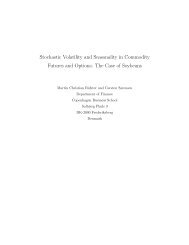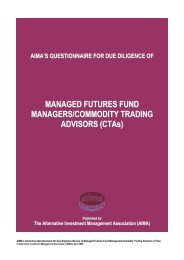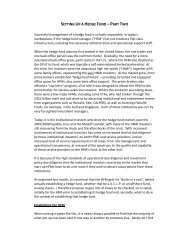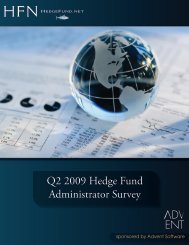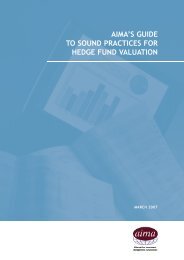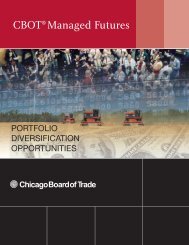Lintner Revisited: A Quantitative Analysis of Managed ... - CME Group
Lintner Revisited: A Quantitative Analysis of Managed ... - CME Group
Lintner Revisited: A Quantitative Analysis of Managed ... - CME Group
You also want an ePaper? Increase the reach of your titles
YUMPU automatically turns print PDFs into web optimized ePapers that Google loves.
cmegroup.com<br />
EXHIBIT 2: Maximum, Minimum, and Mean Rolling Return <strong>of</strong> Barclays Capital BTOP 50 Index Over<br />
Different Holding Periods<br />
Source: AlphaMetrix Alternative Investment Advisors, Bloomberg<br />
The conclusion readers should draw from the graph is that the<br />
possibility <strong>of</strong> making money increases dramatically if the investor<br />
maintains the allocation to managed futures three to five years.<br />
During periods <strong>of</strong> flat or underperformance, the trend follower<br />
stops out <strong>of</strong> or exits stale positions and begins to put on new ones<br />
for which the pr<strong>of</strong>it expectation is greatest. This <strong>of</strong>ten results in a<br />
mean-reversion or “rubber band” effect which manifests itself as<br />
a sudden burst <strong>of</strong> positive performance after an extended drought<br />
<strong>of</strong> opportunities during which the program’s money management<br />
system strived to preserve capital. Experienced investors <strong>of</strong>ten<br />
choose to add to trend followers in a drawdown in anticipation<br />
<strong>of</strong> this effect. Likewise, inexperienced or impatient investors all<br />
too <strong>of</strong>ten redeem at the bottom <strong>of</strong> a manager’s drawdown, only to<br />
witness the surge in performance shortly thereafter.<br />
Managers rarely make material changes to their strategies or<br />
models for this same reason, especially during drawdowns, since<br />
this would be tantamount to redeeming in the same way as in the<br />
example. Initial research and testing are critical, however, to ensure<br />
robustness and performance persistence, as are ongoing efforts to<br />
refine the program and ensure it evolves with markets over time.<br />
Evolution and research have always been essential to successful<br />
trend followers, and any perceived “shifts” typically involve<br />
incremental improvements or innovations designed to enhance<br />
the program rather than depart from it materially (Fischer and<br />
Bunge 2007, 2).<br />
8<br />
Past performance is not necessarily indicative <strong>of</strong> future results.


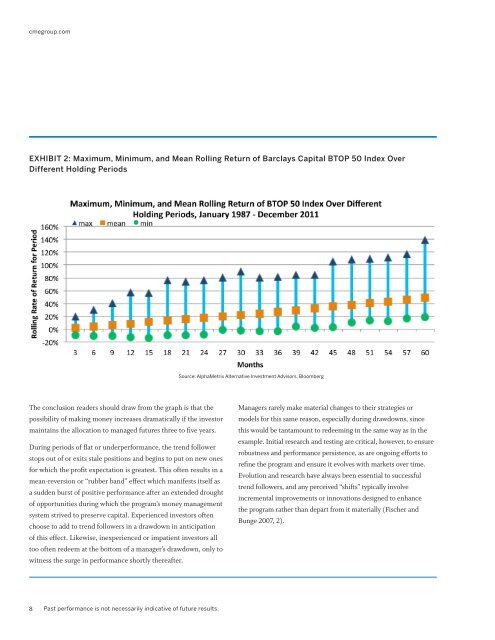
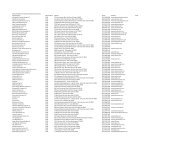
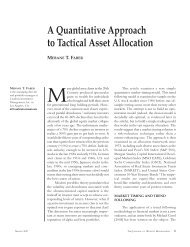
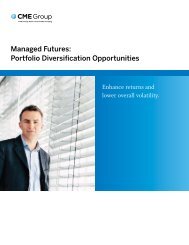
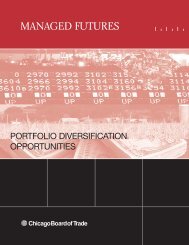
![Definitions & Concepts... [PDF] - Cycles Research Institute](https://img.yumpu.com/26387731/1/190x245/definitions-concepts-pdf-cycles-research-institute.jpg?quality=85)
